What Is Used to Define Overall Design of the Database
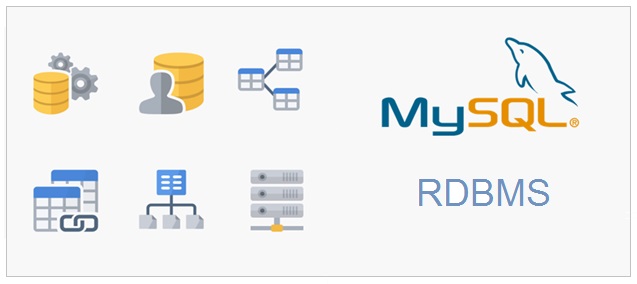
How To Design Database ?
It is important for a software development professional to know how to design the database. The main objective of the database design process is to build a robust database.
The database design is a crucial step in the software development life cycle ( SDLC ) that involves various database operations. The database operations include storing , retrieving and manipulating the data.
The database design is a specialist job that requires some specialist skills in terms of planning the database and then actually building the database using a specific database management system ( DBMS ).
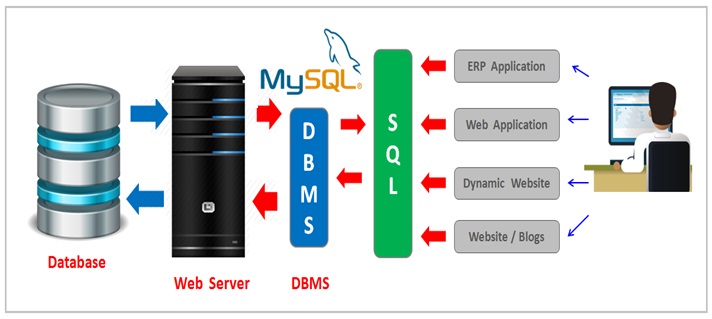
In this tutorial you will learn how to design database step by step . This tutorial will help you understand the database design and development process , various activities involved in the database planning and database development stages.
Let us first start by understanding the importance of database design skills for a software professionals.
How To Design Database ?
Table Of Contents

Why Database Design Skills Are Important ?
The Information technology ( IT ) industry is a multi-billion dollar industry. The IT industry designs and develop the software applications for the business corporations .
The software applications are now indispensible to manage the diversified business operations. These software applications provide the necessary tools to run the business online.
The IT industry hires large number of software development professionals and the programmers every year to work on the software projects.
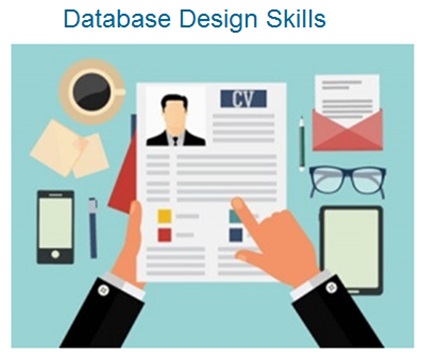

Most software applications involve database operations and therefore , the database design skills are one of the most sought after skills in the job market.
The software professionals with the database design and development skills are amongst paid skills across the industries.
What Is Database In DBMS ?
Why Database Design Is Important Step In SDLC ?
The database are integral part of most of the software applications . The performance of the software also depends upon the performance of the database.
A well planned database is necessary to ensure that database must support the user requirements in terms of data to be stored and the accuracy of the data.
On the other hand , any lapse in the database performance can adversely affect the software performance that can cause major software project cost escalation.

Database Design Process Explained Step By Step
The entire database design and development process can be broadly split into two stages. These two stages are database planning stage and the database development stage.
The first stage of the database design process is the database planning stage .The planning stage involve activities such as understanding the data requirements and creating data models.
The second stage of the database design process involves actually building the database using a specific database management system ( DBMS ).
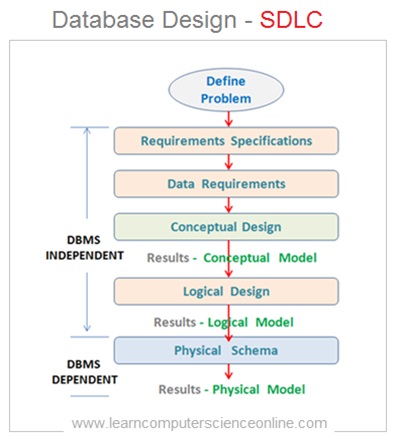
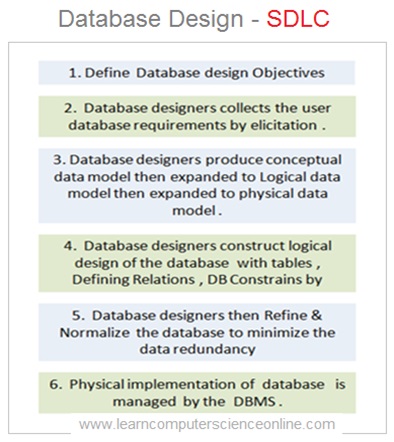
How To Design Database ?
Database Design Planning Process
Planning the database is an important step. A well planned database design is crucial for building a robust database that meets user data requirements. The planning activities include :
- Step 1 - Defining the Database Objectives.
- Step 2 - Database Design Team And Stake holders.
- Step 3 - Mapping Business Processes, Rules And Policies.
- Step 4 - Defining the User Data Requirements.
- Step 5 - Creating Data Models.
- Step 6 - Creating Conceptual Data Model.
- Step 7 - Creating Logical Data Model.
- Step 8 - Database Normalization.
- Step 9 - Defining the Database Requirements Specifications. .
DB Planning - Step 1
Defining the Database Objectives And Purpose
The step in the database design process is to define the objectives and the purpose of the database . The objectives and the purpose of the database helps the database designers to clearly define its purpose.
Depending upon the scope of the project , the database designers can describe the details . For example , for a smaller database design the scope could be limited to recording specific business information.
However , the objectives and the purpose of the database for an enterprise level application can be a detailed document that can function as an important document for the database development team.

DB Planning - Step 2
Database Design Team And Other Stake Holders
Depending upon the scale of the project , the database design job can either be performed by a software developer having expertise in database design .
However , for an enterprise level software development project the database design and development team usually includes number of professionals .
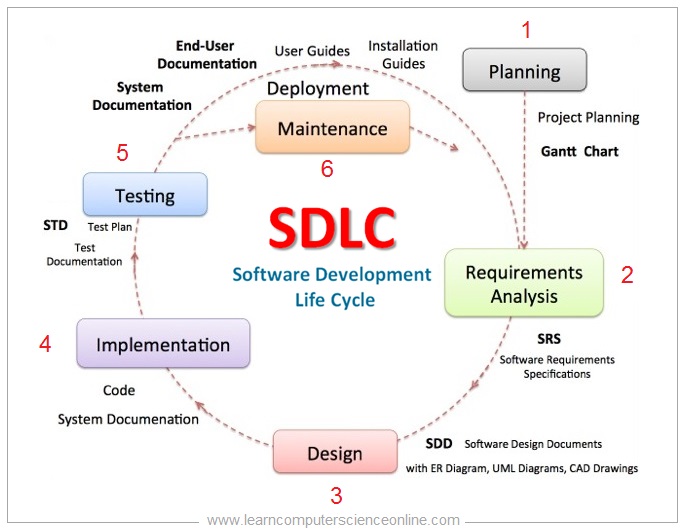
The database design team usually consist of a team of business analyst , domain experts , software developers , database programmers and other stake holders.
The other stake holders might include the employees nominated by the client company. These client employees provide crucial information to the database design team.
DB Planning - Step 3
Mapping Business Processes, Rules And Policies
When the software application is designed for a specific organization , mapping the business processes , policies and the business rules defines the data requirements for various stake holders.
The database design team expensively interact with all the stake holders in order to understand the organization business operations , processes , policy framework and business rules.

This is an important piece of information for the database design team to understand the data flow and the information requirements that database must support.
The database must accurately store the data as per the requirements and incorporate the integrity rules to ensure the accuracy , consistency and the security of the data that will be stored into the database.
DB Planning - Step 4
Defining User Data Requirements
The software application project is a team work and the database design team is an important component of the project execution team.
The database design team systematically and methodically follow the database design process to map and capture all the relevant details requited for the database design and development work.
The process of interacting with all the stakeholders and collecting the necessary details is referred as requirements elicitation . The requirements elicitation is essential process that helps the design team to finalize the user requirements.
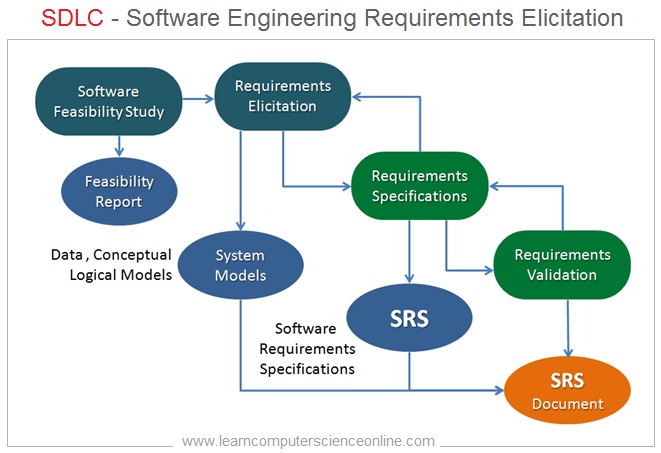
The user requirement specifications ( URS ) is the most important piece of documents that defines the scope of the software project.
From database design perspective, the URS also defines the scope of the database and the user data requirements that software application must support.
The URS also provides crucial design inputs for database design team to incorporate and develop the database that supports user requirements in terms of data , security and functionality.
How To Design Database ?
DB Planning - Step 5
Creating Data Models
The data models are simply tools used by the database designers to visualize and communicate the design features of the database at various stages of the database design and development process.
These data models are later on used as blueprints by the database designers at various stages of the database design and development project.
The database models makes it very easy to visualize and communicate different design features of the database with the help of diagrams.
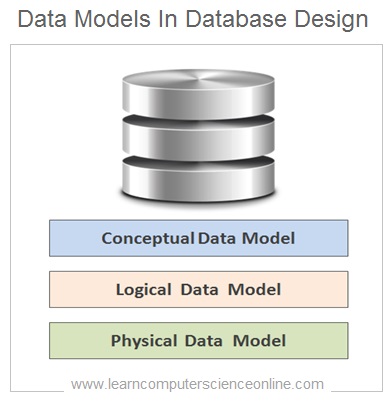
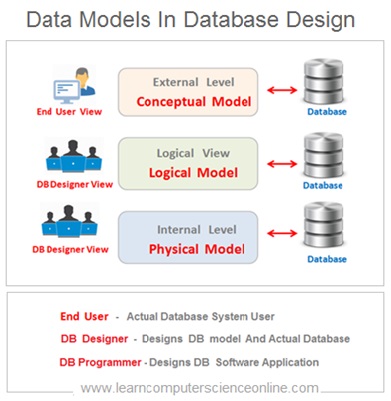
The database designers typically construct three types of data models with different abstraction levels . Each of these data model highlight different feature of the database design.
The three data models include conceptual data model , logical data model and physical data model.
DB Planning - Step 6
Construct Conceptual Data Model
The conceptual data model represents a simple diagram which only highlights the various database entities that exist and the relationship between these entities .
The conceptual data model is the first to construct to capture the user data requirements during the initial phase of the database design process.
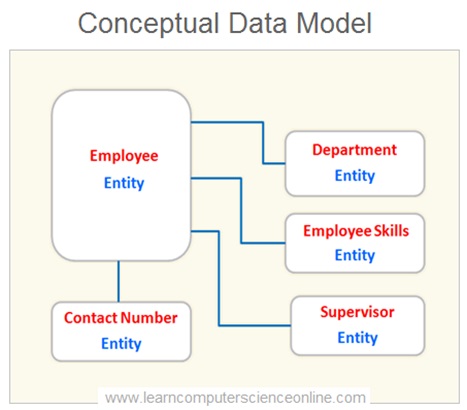
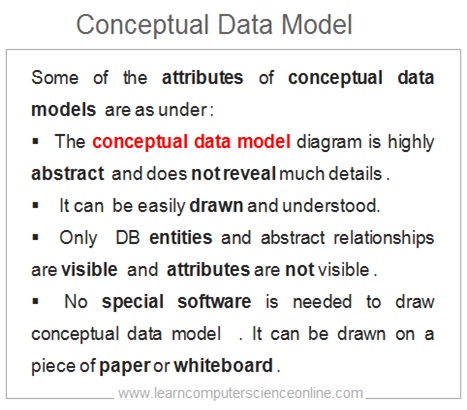
The Entity Relationship Diagram ( ERD ) is an example of the conceptual data model constructed during the database design process.
The conceptual database describe the database view at the end user level with the simple diagram which is DBMS independent.
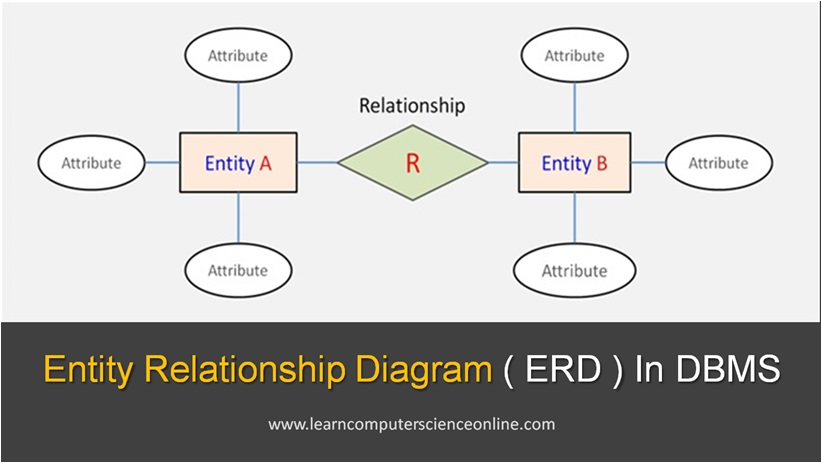
DB Planning - Step 7
Construct Logical Data Model
The next step in the database design is to construct the logical data model. The logical data model is created by expanding the conceptual data model with some additional details.
The logical data model provides the details of the tables. Each table represents a database entity that needs to represented into the database.
The logical structure of the database is represented by the number of interrelated tables . The relationship between these tables is established by defining the database keys.
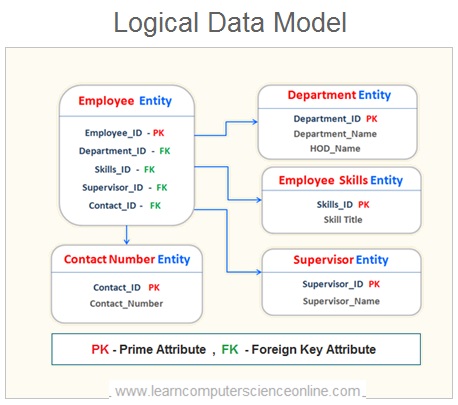
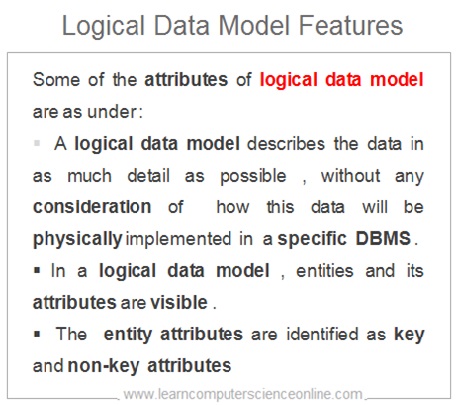
The logical data model also indicates the relationship that exist between various tables. The relationship between the tables is indicated by defining the primary key and foreign key fields for each table.
The logical data model is DBMS independent . That means it does not contain any DBMS specific details . And therefore , the logical data model can be implemented on any DBMS.
How To Design Database ?
DB Planning - Step 8
Database Normalization
The main objective of the database normalization is to minimize the presence of duplicate data in the table. The duplication of data is the root cause of database anomalies.
The database anomalies can cause inconsistent state of the database which cause inaccurate results of the various database operations.
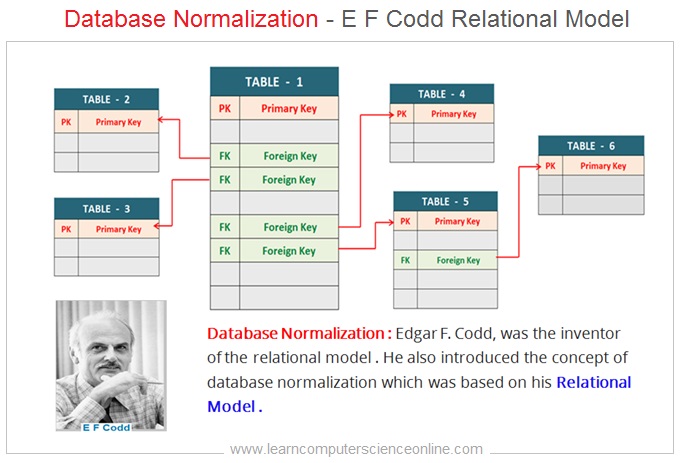
The database normalization is the process of decomposing the larger tables into smaller but more meaningful tables.
The table relationships are created by defining the primary key and foreign key for each table. In relational database , the logical structure of the database consist of interrelated tables.
Read More
What is Relational Database ?
How To Normalize Database ?
DB Planning - Step 9
Defining Database Requirements Specifications
Depending upon the scale of the project and the complexity of the database design , the project team needs to finalize and define the design features and the specifications of the proposed database.
The database after development must support the user data requirements and the software functionality as per the USR document.
How To Design Database ?
Database Development Process
After the database planning stage is completed in all respects ,the next step is to initiate the actual development of the database.
The database planning stage include all the activities that are required to define the database requirement specifications and creating the two data models .
As stated earlier , the database designers create conceptual and logical data models in the database planning stage .
The database development starts by first selecting the suitable Database Management System ( DBMS ) and creating physical data model.
- Step 1 - Selecting the DBMS For Building the Database.
- Step 2 - Creating Physical Data Model.
- Step 3 - Developing the Database With DBMS.
- Step 4 - Database Testing And Validation.
- Step 5 - Database Documentation.
DB Development - Step 1
Selecting the DBMS For Building the Database
The first step in the database development stage is to select the suitable Database Management System ( DBMS ).
The DBMS selection depends upon the type of the software application , database system architecture and the database functionality.
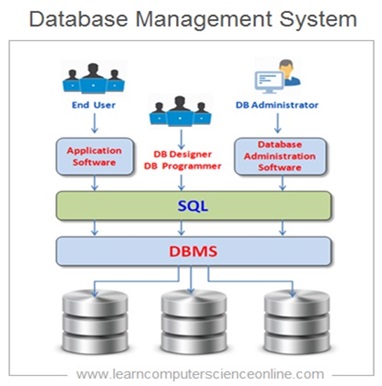
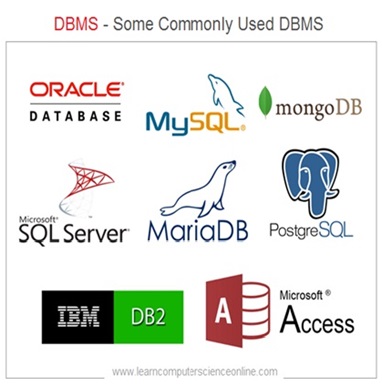
The DBMS is a vital component of any database system. The application software interacts with the DBMS by using SQL ( Structured Query Language ) commands.
The DBMS in turn actually interacts with the database and performs the various database operations. Once the DBMS selection is done , the next step is to create a physical data model .
DB Development - Step 2
Construct Physical Data Model
After selecting the DBMS to be used for developing the database , the next step in the database development is to construct a physical data model.
The physical data model is created by expanding the logical data model with some additional details which are DBMS specific.
The physical data model is DBMS dependent because it contains the details that can be implemented on specific DBMS.
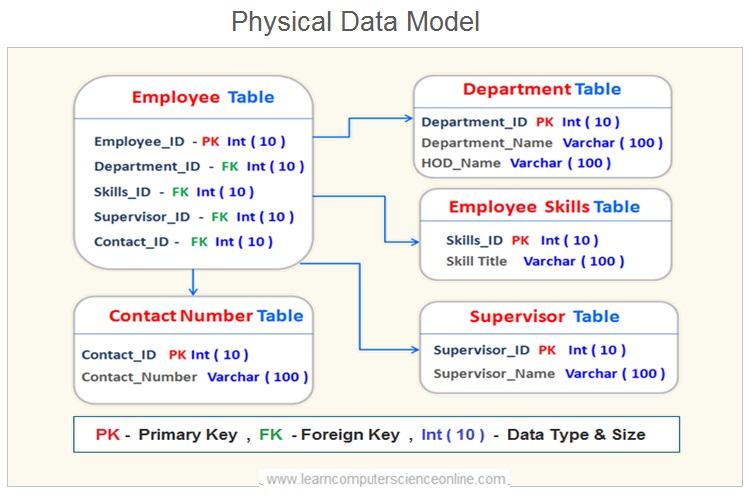
DB Development - Step 3
Database Development With DBMS
At this stage, all the design details and the blue prints are now ready for actually building the database.
Some of the most commonly used Relational Database Management Systems ( RDBMS ) include MySQL , Oracle , MS SQL Server , Mango DB and there are many more DBMS available in the database world.
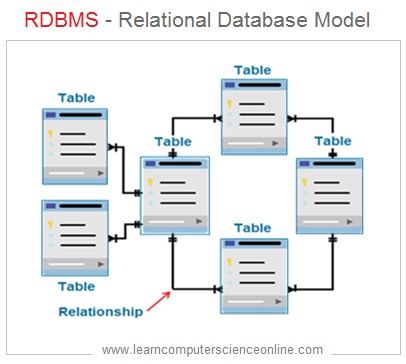
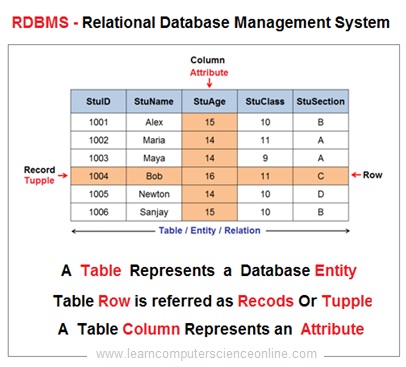
The database development work starts with first creating the tables . The table relationships are defined using primary and foreign database keys for each table. The database constrains can also be defined at this stage.
Some DBMS offers a user friendly graphical interface that makes it relatively easier to create the tables and then define the relations.
DB Development - Step 4
Database Testing And Validation
The database testing is a crucial step that ensures the accuracy , consistency and integrity of the data stored into the database.
After building the database , the next step is to actually test run the database with sample data and validate the results.
The database after development is subjected to extensive testing and validation process including the functionality of the various database operations.


DB Development - Step 5
Database Documentation For Future Reference
The database documentation is an important reference manual in any software development life cycle ( SDLC ).
The project management team also create and maintain the necessary documentation related to the database development.
This documentation is important reference manual for the developer team to incorporate any changes either in the front end software application or into the database structure or additional functionality.
How To Design Database ?
Database Design Online Course
Learn database design and development step by step. This is the most comprehensive and unique Database Design course Online.
This course will give you in depth understanding of most important fundamental concepts in database design with MySQL project .
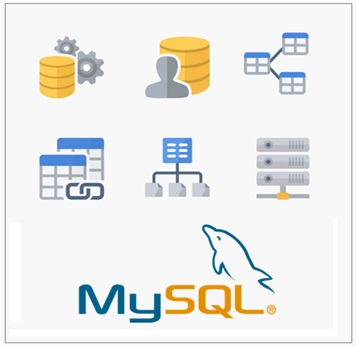

Computer Science Online Course


What Is Used to Define Overall Design of the Database
Source: https://www.learncomputerscienceonline.com/how-to-design-database/
0 Response to "What Is Used to Define Overall Design of the Database"
Post a Comment